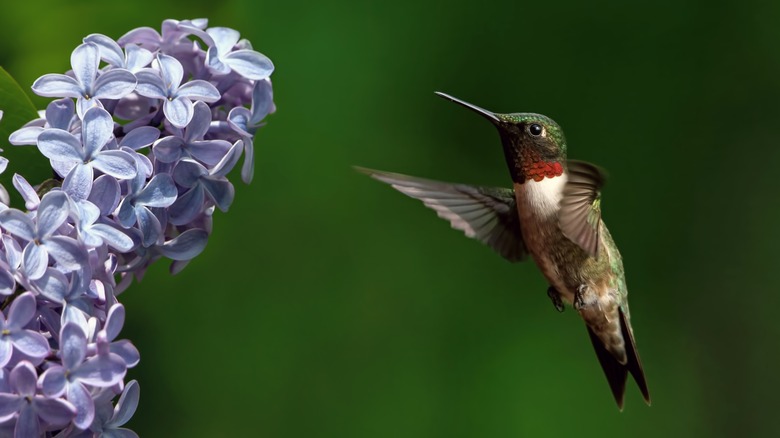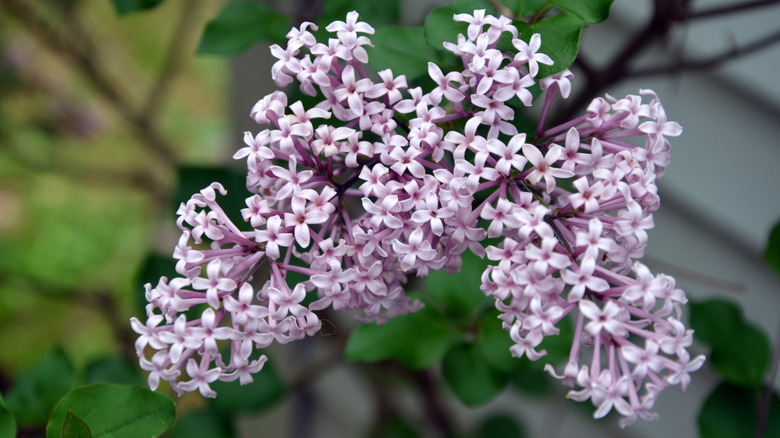Hummingbirds Love Korean Lilac Trees (& There's Another Benefit To Planting One)
It's no secret that adding flowers hummingbirds absolutely love will attract more of them to a yard or garden. These entertaining little hoverers – affectionately called hummers — go from bud to bud noshing on nectar needed to fuel the energy it takes to keep their tiny wings flapping from hundreds to thousands of beats per minute. When it comes to considering trees and shrubs as a hummingbird garden addition, one that offers an abundance of purple blooms that these little birds love to frequent is the dwarf Korean lilac.
One of the reasons hummingbirds are attracted to this gorgeous flowering tree is because of the abundance of trumpet-like clusters of blooms that return to their branches every spring (and will often bloom again in the summer if you don't prune them until the fall). Since bees and other pollinators have trouble getting down inside these types of flowers, there's very often nectar waiting within the reach of the hummingbird's long beak. In addition to offering lots of beautiful purple flowers and scenting a garden quite fragrantly, there's another good reason to plant this type of tree or shrub, especially if you don't have much space.
Another benefit to planting a Korean lilac tree
Since this type of tree or shrub has "dwarf" in the name, you may have guessed that it is smaller than other types of lilacs. These can be bushy or pruned to more resemble a tree, but they only grow up to about 5 feet tall. So, even if your garden space is too small for a traditional tree, you can count on a dwarf Korean lilac to provide bright green foliage when it's not blooming. And, when it does bloom, those fragrant clusters can not only attract more hummingbirds to your yard, they can be clipped to make sweet-smelling flower arrangements to brighten the inside of your home.
Convinced it's worth giving this flowering tree a try to draw more hummers to your yard? Dwarf Korean lilacs grow best in USDA garden zones 3 to 7 and thrive in full sun, according to the University of Minnesota's UFOR Nursery & Lab. The soil needs to be moist, but well-drained; weekly watering is enough until the heat of summer, then you'll need to give them a drink more frequently. With a little nurturing, you can indeed grow this space-saving tree that hummingbirds are sure to love.


